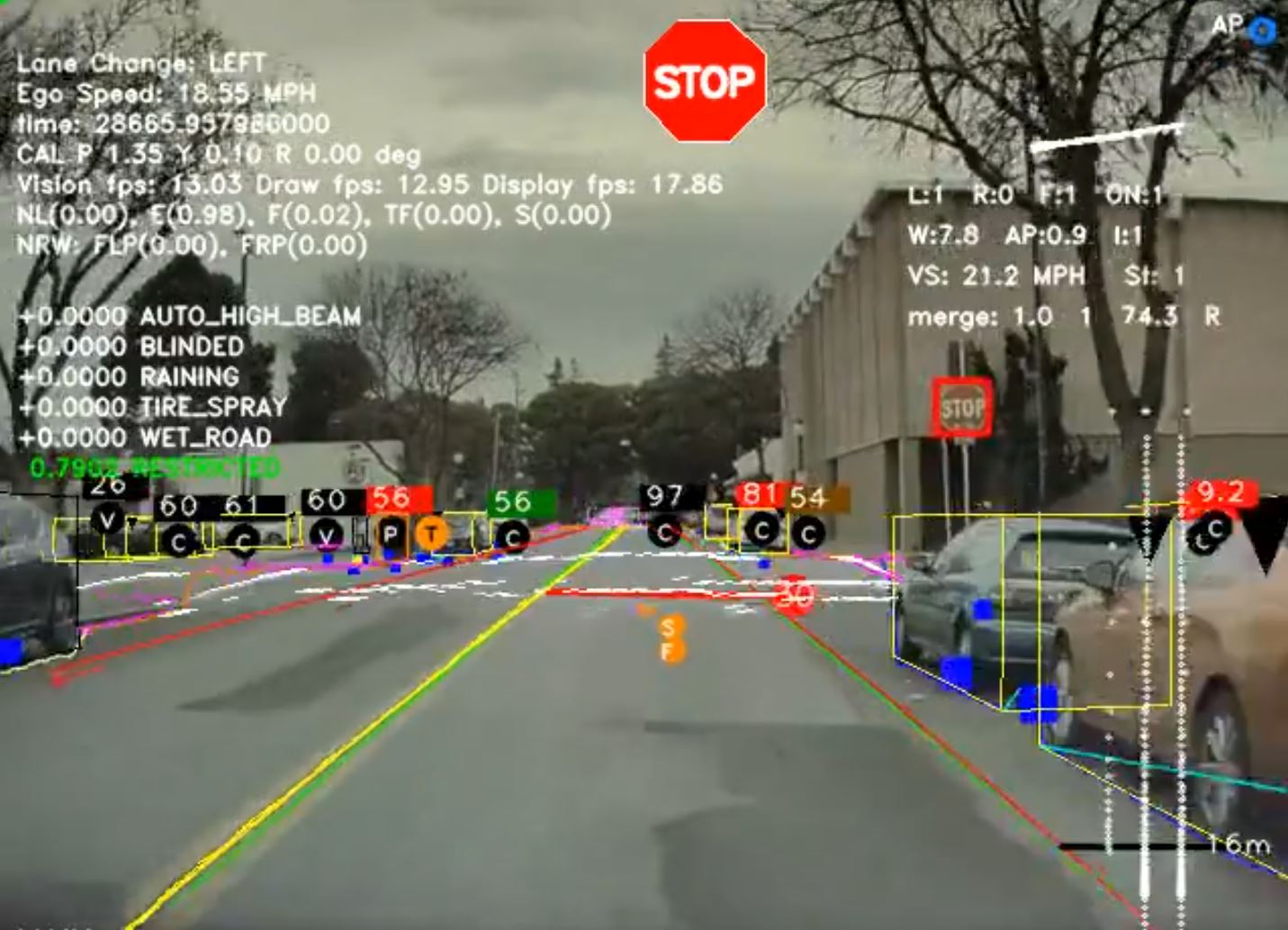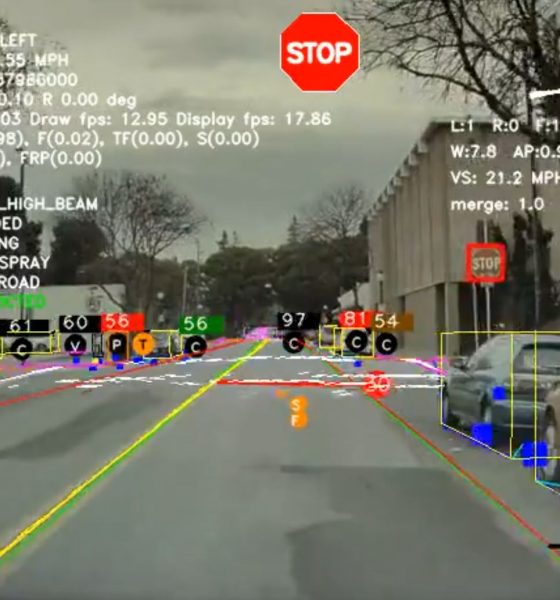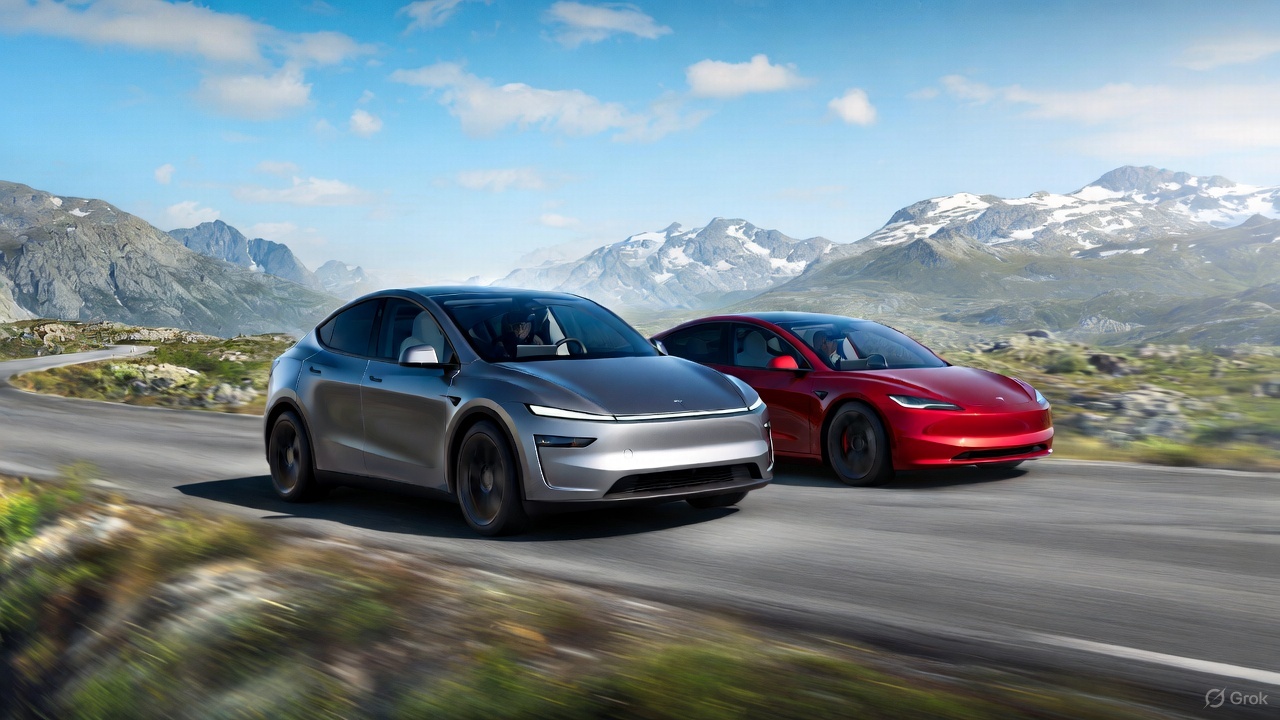

News
Tesla 3D labeling is the next big leap for Autopilot
Tesla’s 3D labeling efforts are integral to the development of its Full Self-Driving suite. Using over 2.2 billion miles of real-world driving data from its electric vehicle fleet, the electric car maker has a treasure trove of information about how human drivers behave.
Elon Musk recently confirmed that Tesla is finishing work on Autopilot core foundation code and 3D labeling, and once these are done, users can expect the electric carmaker to roll out more functionalities in a potentially more efficient manner. More advanced features such as Reverse Summon will also be rolled out.
Tesla 3D Labeling: The Next Big Thing
The Tesla CEO has tagged 3D labeling as the next big thing for the company’s efforts to achieve full self-driving. “In terms of labeling, labeling with video in all eight cameras simultaneously. This is a really, I mean in terms of labeling efficiency, arguably like a three order of magnitude improvement in labeling efficiency where Tesla vehicles use all of its eight cameras simultaneously, and that the company has improved significantly in terms of labeling efficiency,” Musk said during the Q4 2019 earnings call.
During Autonomy Day last year, Tesla’s AI head Andrej Karpathy gave the electric vehicle community an idea of how labeling is done. He said annotating data is a very expensive process that initially involved people processing data, but Tesla has also been using information from its fleet to automate the process of labeling using different mechanisms.
For example, in predicting cut-ins, Tesla taps into its fleet for data on such incidents. This information is then automatically annotated and used to train the neural network, which in turn learns from recognizable patterns. This information is then spun until the neural network is trained enough. Improvements in the neural network can then be rolled out as an update for Autopilot.
The same is true according to Karpathy when it comes to object detection. Tesla sources data from its fleet to learn more about different objects and anomalies on the road. With automated 3D labeling, the neural network can more efficiently process the information and learn even about the rarest things one can encounter on the road.
Karpathy and Musk explained how annotations from its fleet help with path prediction. Using trajectories collected from the real-world, the neural network can improve its driving behavior, say while approaching a corner that it doesn’t actively see. This smarter neural network is perfectly demonstrated by an older Model X with early-gen Autopilot negotiating a muddy rural backroad recently, after a storm in the United Kingdom.
All of these things form part of the equation to achieve Full Self-Driving capabilities. Likely through 3D labeling improvements in the past year or so, Tesla has immensely improved driving visualizations in vehicles equipped with Hardware 3, which now identify traffic lights, garbage cans, and detailed road markings, among others. Thus, Elon Musk’s explanation about rewriting the Autopilot foundational code and 3D labeling could be a way of emphasizing that Tesla owners’ investment in the company’s Full Self-Driving suite would be proven worth it and more soon.
Tesla’s FSD computer and autonomy software will transform how humans travel. The company’s vehicles will be smart enough to drive like humans and eventually make the roads a few times safer for everyone. This may also pave the way for Robotaxis and help achieve Musk’s vision of Teslas earning for their owners while they are busy with work or even while relaxing at home. Tesla Robotaxis would be an attractive form of transportation as they will be more cost-efficient compared to driving personal cars, as predicted by ARK Invest.
Autonomy As Key To Profitability
Autonomy will spell profits for Tesla, as Elon Musk explained during the company’s Q4 2019 earnings call. In order to achieve sustained profitability, Tesla needs to produce high volume units with high margins. Musk appears to consider autonomy as key to Tesla’s high margins as well.
“As we’re close to Full Self-Driving, that is just going to become more and more compelling. So that’s for our financial standpoint, that’s the real mind-blowing situation is high-volume, high-margin because of autonomy,” Musk said.
With FSD capabilities, Tesla adds more value proposition that can help sway even more customers to purchase its electric vehicles from the Model 3, Model Y, Model S, Model X, or the Cybertruck. Depending on regulations in specific regions, Tesla can tap into most of its earnings potential, which bodes well since the company has current plans to expand its presence worldwide with Gigafactories in multiple regions.
Tesla’s path to autonomy is only one of the aspects that make it the leader in the electric vehicle industry. Add to that its advancements on car connectivity and battery technology and one will complete the equation why legacy carmakers with the deepest of pockets can only watch in amazement as a relatively young electric car maker dominates the emerging EV industry.

News
Tesla FSD earns high praise in South Korea’s real-world autonomous driving test
As per the Korea Expressway Corporation’s report, the FSD test was conducted on December 15, 2025, from 10 a.m. to 6 p.m.

Tesla’s Full Self-Driving (FSD) has received a bullish assessment from the Korea Expressway Corporation following a real-world autonomous highway driving test.
A report of the test, shared on Naver Cafe, showed high praise for the system’s safety, capabilities, smooth maneuvers, and confidence.
South Korean highway test
As per the Korea Expressway Corporation’s report, the FSD test was conducted on December 15, 2025, from 10 a.m. to 6 p.m. Four people were in the Tesla that was tested, including the head of the mobility department. All four FSD driving modes were tested, from “Sloth” to “Mad Max.”
To test FSD’s performance, the system was tasked to operate on highways such as Gyeongbu, Cheonan, and Cheonan-Nonsan, as well as city areas in Dongtan New Town, Sejong Special City, and Daejeon Metropolitan City, among others.
Since FSD is only available for the Tesla Model S and Model X that are imported to South Korea from the United States, the system was not tested in a Model 3 or Model Y, which comprise the majority of Teslas on the country’s roads today.
Highway test results
Results showed FSD performing well, both in inner-city roads and on highways. In inner city roads, the testers noted that FSD was capable of autonomous driving at a level that already exceeds that of general human drivers, except in very few areas, such as unprotected left turns and work zone intersections.
In highways, the testers described FSD’s performance as “excellent,” though the system still showed frequent cases of violations in local bus lanes and max speed limit rules. These, however, could hopefully be addressed by Tesla in a future FSD update without many issues. The testers also noted that in some parts of the test, FSD seemed to be driving autonomously in accordance with traffic flow rather than strict traffic rules.
테슬라 Fsd 고속도로 자율주행 테스트 결과 보고 by Simon Alvarez
News
Tesla claims nearly 20% market share as Norway sets new car sales record
Tesla captured roughly one in five new cars in Norway, highlighting its dominance in the world’s most EV-friendly market.

Norway shattered its all-time new car sales record in 2025, and Tesla emerged as the clear winner. A year-end rush ahead of higher EV taxes pushed registrations to nearly 180,000 vehicles, with electric cars accounting for 96% of sales.
Tesla captured roughly one in five new cars in Norway, highlighting its dominance in the world’s most EV-friendly market.
Norway’s EV rush
As noted in a CarUp report, Norway’s electric vehicle sales in 2025 surged, thanks in part to buyers rushing ahead of a post–new year VAT increase of roughly 50,000 kronor on many new electric cars. This ended up pulling demand forward and setting a national record with almost 180,000 registrations in 2025.
The result was unprecedented. From the vehicles that were sold in 2025, 96% of new cars sold were fully electric. And from this number, Tesla and its Model Y made their dominance felt. This was highlighted by Geir Inge Stokke, director of OFV, who noted that Tesla was able to achieve its stellar results despite its small vehicle lineup.
“Taking almost 20% market share during a year with record-high new car sales is remarkable in itself. When a brand also achieves such volumes with so few models, it says a lot about both demand and Tesla’s impact on the Norwegian market,” Stokke stated.
Tesla domination
Tesla led all brands in Norway with 34,285 registrations, which is equal to a 19.1% market share. These results place Tesla well ahead of Volkswagen and Volvo, which held a 13.3% and 7.8% market share in 2025, respectively.
On the model chart, Tesla’s strength was even clearer. The Tesla Model Y topped all vehicles with 27,621 registrations, accounting for 15.4% of the entire market. The Tesla Model 3 also ranked among the top five, accounting for 3.7% of Norway’s entire auto sales in 2025.
Other strong performers included Volkswagen’s ID.4 and ID.7, Toyota’s bZ4X, which commanded 4.9%, 3.9%, and 4.1% of Norway’s total sales in 2025, respectively.
News
Tesla China sees 2nd-best month ever by selling 97,171 vehicles wholesale in December
The results mark Tesla China’s second-highest monthly result on record, trailing only November 2022’s 100,291 units.

Tesla posted a sharp year-end rebound in China last month, with December’s wholesale figures climbing to their second-highest level to date.
The surge capped a late-year recovery for the electric vehicle maker, even as full-year wholesale figures still finished lower year over year. Still, the data highlights how Tesla China’s offerings still resonate with customers in the world’s most competitive electric vehicle market.
Tesla China’s December surge
Tesla China sold 97,171 vehicles wholesale in December, as per data from the China Passenger Car Association (CPCA). The results mark Tesla China’s second-highest monthly result on record, trailing only November 2022’s 100,291 units, based on data compiled by CNEVPost. The details of Tesla China’s December results, such as its domestic sales and exports, are yet to be released.
December’s wholesale results represent a 3.63% increase from the same month last year and a 12.08% jump from November’s 86,700 units. It also marked the second consecutive month of year-over-year growth, signaling renewed momentum in China.
Tesla’s late-year momentum is believed to be partly driven by Tesla pulling deliveries forward to allow buyers to take advantage of more favorable purchase tax policies before the calendar year ended. That strategy helped boost monthly performance even as competition in China’s EV market remained intense.
Tesla China’s FY 2025 volumes
Despite the strong December finish, Tesla China’s wholesale sales declined on an annual basis. The electric vehicle maker’s total wholesale figures for 2025 reached 851,732 units, down 7.08% year over year. This could have been due to a variety of factors, from intense competition in the domestic Chinese market to Giga Shanghai’s changeover to the new Model Y in the early part of the year.
Tesla Gigafactory Shanghai continues to play a central role in its global operations, producing the Model 3 sedan and Model Y crossover for both Chinese customers and export markets. The efficiency of Gigafactory Shanghai has allowed it to become Tesla’s largest factory by volume, as well as the company’s primary vehicle export hub.







